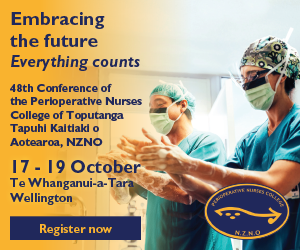
“WHO’s (World Health Organization) weak guidance has left nurses, health care workers and patients unprotected, exposed and infected,” Global Nurses United (GNU) said in a letter to WHO director-general Tedros Adhanom Ghebreyesus in November, 2020. “Thousands of health-care workers have died from COVID-19 around the world”.
NZNO kaiwhakahaere Kerri Nuku and former president Heather Symes jointly signed the letter on behalf of NZNO, in a decision approved by the board electronically in November and ratified retrospectively at December’s board meeting.
According to the GNU, recent research found tiny respiratory droplets could be transported as far as eight metres away when people breathed, talked, coughed or sneezed.1 Studies had found infectious COVID-19 particles in the air two to five metres from infected patients2 “providing further evidence for airborne/aerosol transmission”.
Yet WHO had refused to recognise this, failing to meet its own obligations to be “guided by the best available science, evidence and technical expertise”, GNU said in the letter.
Many nurses and health-care workers did not have sufficient personal protective equipment (PPE) or guidelines to care for their patients safely, leaving them exposed to infection and death.
The letter cited WHO reports that 14 per cent of COVID-19 cases worldwide were health-care workers – and in some countries as high as 35 per cent.
WHO must “immediately and fully recognise that airborne/aerosol transmission is a significant mode of transmission” and strengthen its guidelines on PPE and workplace safety to include airborne precautions when caring for suspected or confirmed COVID-19 patients. “Implementation of such precautions would have saved an untold number of lives,” the letter stated.
An N95 respirator face mask, eye protection, fluid-impermeable gown and medical grade gloves should be the “absolute minimum” and full skin, hair and clothing coverage “optimal”, GNU stated. PPE should always be worn when entering a COVID-19 patient’s room.
GNU observed that COVID-19 was a new virus, with still many unanswered questions, meaning “the precautionary principle must govern decisions about protections.
“Instead, WHO’s guidance on PPE and infection control ignored the precautionary principle, remains unprotective and continues to endanger nurses, health care workers and their patients.”
GNU is a federation of nurse and health unions from 29 countries, 24 of which have signed the letter.
Infection prevention and control nurses college chair Carolyn Clissold said she felt for colleagues overseas who were facing “desperate situations”.
However PPE was not the only way to protect workers – good airflow and hygiene practices, such as frequent surface cleaning and hand hygiene, were also important. “PPE is not everything,” she said.
In New Zealand, the Ministry of Health, updated guidelines for workers in managed isolation/quarantine facilities in November after reviewing concerns about air transmission. It now advises using N95/P2 masks, when a two-metre distance cannot be maintained, for example when entering a guest’s room.
References
- Bourouiba, L. (2020). Turbulent Gas Clouds and Respiratory Pathogen Emissions: Potential Implications for Reducing Transmission of COVID-19. JAMA, 323(18), 1837-1838.
- Lednicky, J.A., et al. (2020). Viable SARS-CoV-2 in the air of a hospital room with COVID-19 patients. medRxiv. Preprint article. https://doi.org/10.1101/2020.08.03.20167395



